The content of the article
White trousers, skirts, blouses and dresses, although beautiful, but not too practical elements of the wardrobe. It’s easy to stain a light cloth, but it’s difficult to clean it without ruining a thing. One of the most severe cases is rust. If traces of wine, coffee and ice cream can be removed with some Fairy or household soap, then reddish stains have to be removed with more powerful means. Which ones? The composition of the stain remover depends on the type of fabric.
Gentle methods
It is better not to experiment with a silk dressing gown or a wool coat. Expensive and delicate things are given for dry cleaning, where they can work with such materials. If you use the improvised products, you can burn a hole in the fabric, stretch or make the white color grayish or yellowish.
Rust from cotton and synthetics is removed with acids. Substances not only dissolve a reddish coating, but also retain the original color of the fabric, and sometimes bleach.
A shirt or denim blouse is treated with lemon. A thin slice of citrus is cut off, wrapped in several layers of bandage or gauze, applied to the stain. The lotion is ironed with a hot iron so that the acid is absorbed into the tissue. Fresh fruit is replaced by juice. Soak a cotton swab and clean gauze. And do not forget about heat treatment, because a hot iron starts chemical reactions and helps to dissolve a rusty stain.
Under a reddish stain, it is recommended to lay paper napkins or white clean rags. The rag absorbs lemon juice mixed with impurities. If you do not use fabric, then rust can be imprinted on the other side of a blouse or skirt.
Clothing treated with citrus juice is washed. 50-100 g of powder is poured into warm water and foamed. You can optionally soak a cotton or synthetic item. It is better to immediately send silk and satin clothes to the washing machine.
If spots appeared due to drying on rusty pipes, then freshly squeezed lemon juice is rubbed into the stains. The wet area is dried with a hairdryer. Rinse in water or wash with powder is not necessary. Citruses perfectly brighten brownish stains and bleach fabric.
Clothing made from thin and delicate materials, as well as leather and velor, is not recommended to be treated with acid. The substance breaks down the fibers and leads to rapid wear. Lemon is replaced with toothpowder or toothpaste. The product is rubbed into the rust. The composition is applied in a thick layer so that it is well absorbed. Leave to dry for 25-40 minutes, depending on the density of the tissue.
It remains to soak clothes and wash with your hands. Toothpaste is suitable for whitening woolen sweaters and dresses, delicate lace and translucent chiffon blouses. The main thing is that it should have a minimum of coloring substances. Ideally, if the toothpaste or powder is white.
Quick options
Reddish stains from delicate tissues are removed with glycerol compounds. They are softer and safer than acid options. You will also need Fairy or another dishwashing detergent. It can be replaced with liquid soap. The component is combined with glycerin in a ratio of 1 to 1. Dilute with water heated to 37–40 degrees and dip soiled clothing into the solution. If the spot is not larger than a pea, soaking the thing is not necessary. It is enough to soak the dirty area with a glycerin compound and wait until the traces of corrosion dissolve.
Items made from delicate materials are whitened with chalk paste. A small piece is ground on a grater, a little glycerin is poured so that the slurry is not too liquid, but also not thick. The bleaching composition is spread on a damp cloth with a thick layer.
Peroxide copes with stains of corrosion on white fabrics.A cotton-gauze swab is impregnated with a disinfectant solution and applied to the stained area for half an hour. To prevent a reddish print on the clothes, put a piece of cling film under the stain, and a napkin on top. Peroxide is washed from the fabric with cool water. When washing, a little bleach is added along with the powder to fix the result.
Cotton fabrics and denim are saved by citric acid. The stain remover is prepared from a food supplement and water. The ratio of 1 to 20. The solution must be heated to 75–80 degrees to trigger chemical reactions. Soiled trousers or a blouse are dipped into the workpiece for 10 minutes. Rub the stain gently with your hands or brush. Residues of citric acid are washed out of the material under running water.
Old and stubborn rusty stains are removed with vinegar. The option is not suitable for delicate fabrics. Fine-grained salt is added to the food supplement in small portions. When the consistency of the mass becomes creamy, its rust mask is spread on the spots. After half an hour, sweep away the remains with a brush. Wash the treated area under running water to wash the composition from the material.
Traces of corrosion on white tissues are removed with acetic acid. Bring a cup of water to 85–90 degrees, pour 50 ml of the additive into the hot base. The composition is not boiled, otherwise the concentration of acetic acid will increase, and then the product can spoil the clothes. A stained dress or skirt is kept in solution for 5 minutes. After washing in warm soapy water, rinse thoroughly. If the stain turns pale but does not disappear, a toothpaste or detergent is rubbed into it. Acetic acid stain remover is not used twice, otherwise the fabric will darken.
The most powerful compositions
White jeans and other dense materials are cleaned with hydrochloric acid. You will need a two percent solution. If you take a more concentrated option, the clothes will have to be thrown away or turned into a floor rag. Pants or a jacket are dipped into the workpiece for 20-30 minutes. Then a solution is prepared that neutralizes hydrochloric acid.
The composition includes ammonia and distilled water. Take 60 ml of a pharmacy product per 1 liter of base. Keep clothes in a solution for 10-15 minutes. Squeeze thoroughly and then dip into plain water without additives.
Durable fabrics are cleaned from rust by a toilet cleaner. The stained area is moistened and several drops of liquid are applied. Foam with a toothbrush or sponge. After 10–20 minutes, put in the washing machine separately from other things. Select "Normal" mode, add regular powder or gel. No bleach.
Old spots are removed using ammonia and tartaric acid. The ammonia composition is not recommended to be applied to delicate fabrics. The option is suitable for cotton, denim, jeans and other synthetics.
For the first stage you will need:
- tartaric acid - 1.5 tbsp. l .;
- water - 4 tsp;
- salt - 50 g.
Turn the ingredients into a homogeneous gruel. Distribute with a thick layer on rust spots. Wait from half an hour to 40 minutes. Brush off the salt paste. Prepare a solution of 2.5 liters of water and 150 ml of ammonia. Dip clothes in for 10 minutes. Rinse 2 times in clean water and then wash.
Turpentine is also able to remove rust. First, a gauze or paper towel is placed under the stain. Then a stain remover is applied with a cotton swab. Sprinkle with talcum powder and cover with a piece of white cloth. Iron the iron, and then wash the thing.
Traces of corrosion are removed with a mixture of acetic and oxalic acid. They resort to this method if the rest have not cope with the spots. 5 ml of each agent is poured into 1 liter of water, warmed to room temperature. The clothes are soaked for 30-50 minutes. After the procedure, wash with hands and rinse thoroughly.
White things can be saved by means, which include acids. They dissolve rust and do not leave dark spots, unlike chlorine.The main thing is to remove reddish stains before washing. And before using each folk product, it is imperative to test it on an inconspicuous patch of clothing.
Video: how to remove rust stains



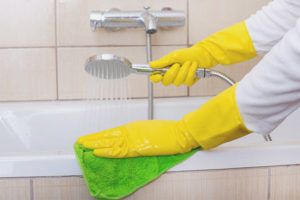
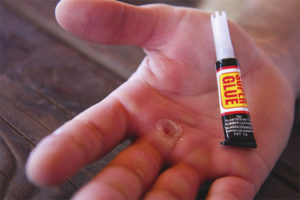
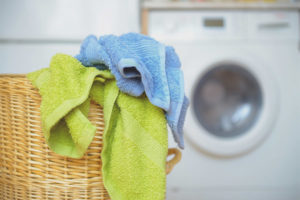
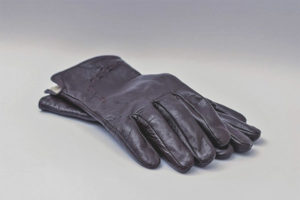


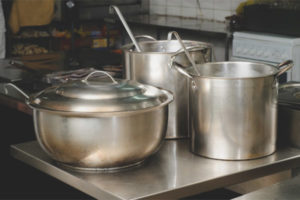
Submit